

Suunto Blog
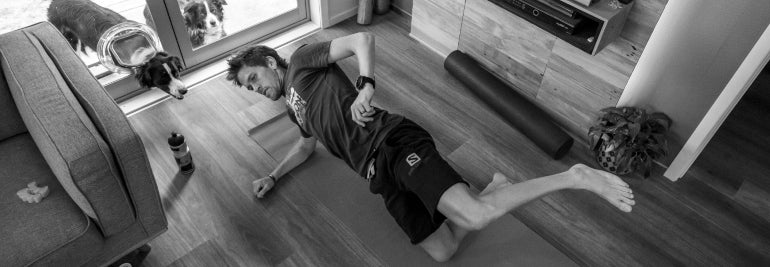
7 indoor training exercises to stay in shape
Training at home regularly is worth its weight in gold. It’s a good habit to build, and doesn’t need to take a lot of time or space. There are many things you can focus on at home, from plyometric training for explosiveness, strength training for stability and stamina, and also mobility training to maintain the range of motion in your joints. There is a huge potential for improvement!
© Graeme Murray/Red Bull Content Pool
Suunto #indoorchallenge!
Given many of us are confined indoors due to the coronavirus crisis we decided to share indoor training inspiration. We invited some of our athletes to participate in our indoor training challenge. Each one will share a short work out and then tag the next athlete to share his or her’s. Your job is to do them!
To protect society’s most vulnerable people from the coronavirus, the best thing we can all do to #flattenthecurve is accept social distancing measures and to stay at home if instructed by authorities. Keep in mind this situation won’t last forever.
The first video is from ultra runner Ryan Sandes who is currently in lock down in Cape Town, South Africa. Sandes says he focuses on mobility work and strength training at home. “Being stuck at home is a good opportunity to do lots of mobility and strength training to make yourself a better runner and to give you better longevity,” he says.
Click play to follow Ryan's indoor workout!
Improve your mobility
Mobility training involves exercises that improve the range of motion in your joints. Many runners, for example, work on hip and spine mobility because of the repetitive nature of running and how this can, over time, reduce mobility in these areas.
“For every one hour of running you do you should do at least 15 minutes of mobility work,” Ryan says. “Training at home is a great opportunity to develop good movement.”
Blast your core
Mountain athlete and Suunto ambassador Emelie Forsberg and her partner Kilian Jornet take turns training outdoors and staying at home to look after their baby daughter. She does one indoor training session everyday and usually focuses on core strength.
“I like to do a short 10 to 15 minute core workouts,” she says. “I write down the exercises, put on my watch and go! No rest in between the exercises, I just go for the whole 10 to 15 exercises. If I feel really motivated I’ll do it twice.”
Do stair hops
To give his quadriceps a work out while he’s at home, Ryan Sandes does reps of hopping up and down stairs. “Be creative, and think outside the box,” he says. “Remember, anything is better than nothing.”
Let loose and dance!
Studies have shown that dancing regularly has numerous health benefits, including warding off degenerative brain diseases. Training doesn’t always need to be structured and serious; instead follow Emelie’s example, and build in some boogie while you’re stuck at home.
“Put on your favourite music and go for it!” she says. “Or do aerobics, Zumba, jumps, lunges, burpees – whatever gets you going!”
Watch sports and move
Mountain athlete and Suunto ambassador Kilian Jornet does one indoor workout at home every day. “I believe one the best things to do is to watch sport shows, live or repetitions, or films about sport,” he says. “This way we get inspired and we can relate our training to what we are watching.”
Run in your garden
Running lengths or around in circles in your garden, if you have one, doesn’t sound like too much fun, but according to Sandes it has two benefits.
Firstly, it’s good mental training; boredom is an inevitable part of long distance running, and staying present and motivated requires mental focus. Practicing at home in this way can develop this. Secondly, it’s an opportunity to work on your running technique. If you have a backyard, work on the key aspects of good running economy.
Skip to endurance
To maintain your base cardio fitness, Kilian Jornet suggests skipping. Do three minutes skipping, rest for a minute, and then skip for another three minutes. Do at least six three minute intervals. You’ll need a towel!
Lead image: © Graeme Murray/Red Bull Content Pool
Read more articles
7 recovery tips for immune fitness
Emelie Forsberg's top 7 yoga poses
8 essential running form drills
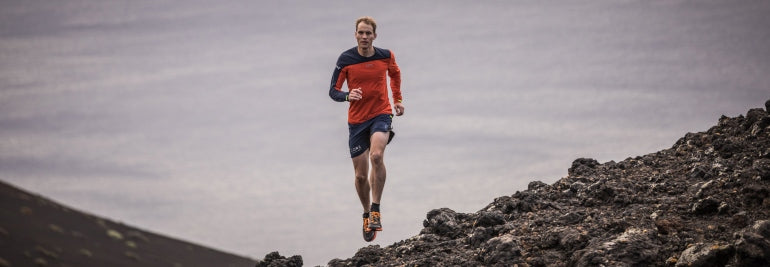
How to adapt your training when the unexpected strikes
After months of dedicated training and being focused on your goal, it’s difficult to accept and adapt when the unexpected occurs and turns everything upside down.
That’s the position many of us find ourselves in right now, with the COVID-19 pandemic causing massive disruptions to our normal way of life. Races are being cancelled, governments are asking us to follow social distancing measures, and even stay at home as much as possible.
There are also many other situations that can throw our training plans into turmoil; a family emergency, a natural disaster like a flood or hurricane, or an injury. Smart athletes know how to pivot and change things up when necessary.
Michael Arend coaches ultra and marathon runners, as well as triathletes and ski mountaineers.
Professional running coach Michael Arend says in the face of the unexpected, when your plans are torn asunder, it’s important to step back and ask yourself what will keep you motivated moving forward. “If you love your sport, you will find a new goal to keep you going,” he says.
We talked to Michael, a former officer in the German Mountain Army, semi pro runner and host of Germany’s most popular running podcast, Fat Boys Run, and asked how to adapt when our plans get dashed.
He gave us 8 tips on how to keep improving.
Keep going for it if ...
This comes with an important caveat; even if your goal has disappeared, you should continue peak training if your training data shows you are still making progress. If your average heart rate is decreasing over time on your long runs, or your pace is improving while your average heart rate remains the same, then this shows you are continuing to improve. When this progress stops or reverses, then it’s time to reduce your effort and allow more time for regeneration.
Box jumps build explosive power. Photo by Meghan Holmes on Unsplash
Use your peak
What goes up must come down … and this is true for peak fitness so Michael advises not to try and hold on to it. “Use your peak right now,” he says. “If your plan was to run a 10k race, but it was canceled, then run a Strava segment, or try for a treadmill personal best. Use your peak and say goodbye. Then look ahead and be positive, you will gain it again if you work hard.” If you try to stay at your peak you will end up overtraining and exhaust yourself. Use it and lose it.
Find a new goal
Many of the athletes Michael works with from his office in the south of Munich need a goal to stay motivated. Others are happy to just keep improving. If you’re the former type, then find yourself a new goal. Given the current global disruption, you might need to be creative. For example, Michael says a top German runner decided to run a 50k on his treadmill and ended up breaking the world record.
“Choose a goal, even if you don't know whether it will happen,” Michael says. “The main thing is it keeps you going.”
Have a Plan B
One of Michael’s clients is a top trail runner. Her goal is to perform well at a race that could be cancelled. If that’s the case, her Plan B is to attempt an FKT (fastest known time) on a trail that is a similar distance, terrain and elevation gain as the race.
“Have one goal for motivation, and one goal that will take place 100%,” Michael says. “Try to make the Plan B goal mirror the A goal.”
Photo by Chanan Greenblatt on Unsplash
Focus on your base, but only when ...
If your race has been cancelled and there isn’t another one coming soon, Michael recommends focusing on capacity training. He works with two training phases in his coaching; capacity and utility. The former is about building endurance, cardiovascular fitness, V02 Max and maximizing mitochondria to gain more energy.
Utility training is specialised according to the sport and the goal. “For example, runners who want to run a marathon a month or two away need to run a lot of mileage at a special pace, and try to reduce the fatigue at this pace,” Michael says. “This is an example of a specialisation.”
Right now if you don’t have a race, go back and concentrate on capacity training and you will continue to improve overall, and then you will be very well placed to specialise at a later date.”
However, a block of capacity training is at least eight weeks long, and better if it’s 12 or 16 weeks, Michael cautions. The body needs this amount of time to respond and adapt to training. If you only have four weeks, then capacity training doesn’t make sense.
Photo by Alora Griffiths on Unsplash
Build power and strength
If you don’t have at least eight weeks for a block of capacity training, then Michael advises to focus on power and strength training. “If you want to step back just for four weeks, it’s better to do some plyometric, core and strength training,” he says. “If the strength training is very hard, say four by four reps with heavy weights for example, then you will see improvements after three to five sessions. Plyometric training can include box jumps and skip rope to improve your explosiveness.”
Work on your weaknesses
“Most of the people I work with never usually train their weaknesses because there is always a race around the corner,” Michael says. “But right now they have the time. Distance runners, for example, usually don’t do their speed work. Now is a good time to do interval training.”
Another common weakness Michael sees is a lack of explosive power. “Especially in those who don’t have an athletic background,” he says. “They lack efficiency and ‘pop’ in their spring. This is because their tendons and muscles lack the stiffness to fire, to store power and then explode with it. They don’t train that.”
Chill with your family
If you usually spend 10 to 15 hours a week training, that’s time you aren’t with your family. While training is awesome for you, it can be hard on them. “Right now is a good time to spend time with your family and recharge your batteries,” Michael says. “Take care of your body and mind. Your training doesn’t have to fall apart because you reduce. It’s also a good time to take care of any injuries or niggles you might have had. Relax!”
Lead images: © Photo by Element5 Digital on Unsplash
Read more articles
7 indoor training exercises to stay in shape
Fulleing the engine: 6 principles of nutrition for athletes
7 recovery tips for immune fitness
7 principles to help you find the flow
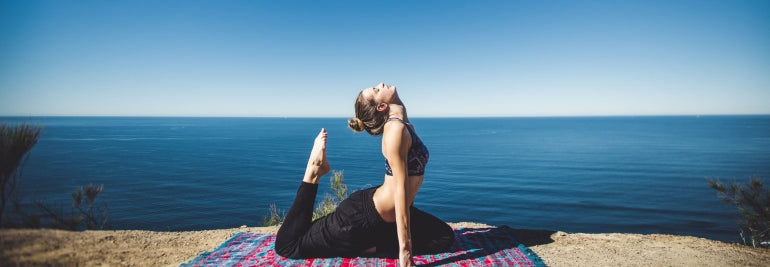
7 recovery tips for immune fitness
Spend more time taking it all in and savouring life. Photo by Simon Migaj on Unsplash
Recovery and training are like yin and yang. If you’re laying around too much, you won’t be making the necessary gains to reach your goals. If you’re training too much, you won’t give your body the downtime it needs to recover and adapt. The sweet spot is somewhere in the middle.
It’s not uncommon for athletes to lean more towards the overtraining end of the spectrum, and one of the risks of overtraining is a weakened immune system. Signs of overtraining include, for example, feeling tired or heavy all the time, feeling irritable, or having regular illnesses.
This is why our mantra should be, “recovery is as important as training”. These seven tips and articles will help you stay in balance and care for your immune system.
Avoid tunnel vision
It’s important, and sometimes challenging, with training not to get so focused on our goals that we develop tunnel vision; so locked into our training schedule that we lose sight of the big picture, and all the little cues we might need to rest. It’s important to step back once and while, consult your loved ones or people you trust, and consider how you’re doing and what your body and mind need.
Suunto athlete Ryan Sandes knows all about this. He battled a long period of illness and eventually returned to top form after allowing himself to rest and recover fully. We talked to him about the experience and he shared tell tale signs when you need to back off.
7 signs you're pushing too hard
Get more sleep
Working full time, it’s all too easy to burn the candle at both ends; early mornings, long working days, and late nights. It’s not uncommon to have a string of nights where we sleep for only six or seven hours. And on top of that we expect ourselves to train. It’s a lot!
Sleep doctor Henri Tuomilehto told us when we don’t get enough sleep our health will gradually deteriorate. He recommends trying to sleep an extra 30 to 60 minutes a night. “When times are tough you have to respect rest and recovery,” he says. “That is the only way you can stay balanced. Sleeping well is essential for this.”
Learn how sleep can make you a better runner
Breathe well
Science has shown how breathing well has many health benefits. And crucially, one of those benefits is it helps to reduce stress. Chronic stress takes a terrible toll on the immune system. Over time it weakens it, making us more susceptible to illness.
Mike Maric, a former pro freediver, teaches athletes how to breathe better. He says many people have no idea about their own breathing patterns and often breath from the chest, rather than more deeply. “We need to breathe not with the chest, but with the diaphragm,” he explains. “But you need to practice regularly – the basics, about eight minutes each day.”
Is the ultimate cross-training breathing?
Practice yoga
© Matti Bernitz / Suunto
A gentle yoga practice stimulates the parasympathetic nervous system – the rest and digest side of the nervous system – reducing the volume of stress hormones that weaken the immune system. It also feels amazing physically!
Suunto ambassador Emelie Forsberg practices yoga every morning because it helps her tune into her body. “It allows me to tune into how the muscles are feeling, where the tender spots are, what needs attention,” she says. “It gives me the sensitivity to be able to listen to the body.”
Emelie Forsberg’s top 7 yoga poses for runners
Eat well
© Craig Kolesky / Red Bull Content Pool
Our food choices are indicative of how we’re doing as individuals. When we feel stressed and hectic, it’s often the case that we make poor food choices. Eating nutritious food is essential for good health and a strong immune system. And once in a while it’s great to really examine how you are eating, and put a lot of love and time into preparing amazing meals.
We talked to our ambassador and athletes about how they eat, and found six principles they all share, despite having different approaches to food. “As an athlete it’s very easy to slip into taking lots of recovery shakes to try to get the goodness back into your body,” ultra runner Ryan Sandes says. “But I don’t think you can replace eating good whole foods.”
Fuelling the engine: six principles of nutrition for athletes
Walk regularly
Like with breathing and yoga, science has shown the many health benefits walking regularly gives us, including boosting immune function. Taking a leisurely stroll through a park is incredibly relaxing for body and mind. Relaxation is key for immune system health.
To build the walking habit, decide on a distance or amount of time that you can easily walk each day, and over time gradually increase it.
How to walk your way to good health
Find your ‘being mode’
One of the reasons for a weakened immune system is we are constantly in what the mindfulness tradition calls “doing mode”; trying to achieve, get things done, and problem solve. While this mode is natural to an extent, we also need to spend time in “being mode”; when we just enjoy being without any aims. Maybe for some of us that is reading a good book, listening to music, and for others lying around on the beach doing nothing.
Mindfulness can help us tune into our behavioural patterns so we can be more responsive and make better decisions that avoid overwhelm. “Listen to your body and really try to get a mind-body connection going because that’s the most important connection you can have,” says South African mindfulness coach and trail runner Meg MacKenzie. “Pushing through isn’t always the best option.”
How to bring mindfulness to the trail
Lead images:
Photo by Fezbot2000 on Unsplash
Photo by Tower Paddle Boards on Unsplash
Read more articles
The benefits of the long run and how to do it right
7 tips for running in hot weather
7 principles to help you find the flow
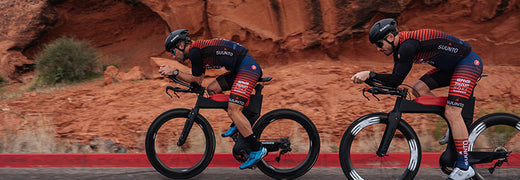
View TSS and other power-based cycling metrics in real-time
Together with TrainingPeaks we give you the tools and data to take command of your training. You track your workouts with your Suunto watch and TrainingPeaks gives you in-depth analysis and planning tools to achieve your full potential. After each activity, you can analyze your performance to determine where you are at. (Read more about benefits you get with Suunto & TrainingPeaks.)
On Suunto 9 and Suunto 5 watches you are also able to follow selected TrainingPeaks metrics in real-time. This lets you adjust the effort and duration of the exercise on the go, helping you reach your goal. TSS, IF and NP can be accessed in the SuuntoPlus section of Suunto 9 and Suunto 5 watches.
Read on to learn more about these metrics!
Normalized Power (NP)
In essence, Normalized Power is an estimate of the power that you could have maintained for the same physiological “cost” if your power output had been perfectly constant (e.g., as on a stationary cycle ergometer), rather than variable. Keeping track of normalized power is therefore a more accurate way of quantifying the actual intensity of training sessions, or even races.
For example, it is common for average power to be lower during criteriums than during equally-difficult road races, simply because of the time spent soft-pedaling or coasting through sharp turns during a criterium. Assuming that they are about the same duration, however, the normalized power for both types of events will generally be very similar, reflecting their equivalent intensity. In fact, normalized power during a hard ~1 hour long criterium or road race will often be similar to what a rider can average when pedaling continuously during flat 40k time trial – the normalized power from mass start races can therefore often be used to provide an initial estimate of a rider’s threshold power.
Intensity Factor (IF)
Although normalized power is a better measure of training intensity than average power, it does not take into account differences in fitness within or between individuals. TrainingPeaks therefore also calculates an Intensity Factor (IF) for every workout or time range analyzed. IF is simply the ratio of the normalized power as described above to your threshold power.
For example, if your normalized power for a long training ride done early in the year is 210 W and your threshold power at the time is 280 W, then the IF for that workout would be 0.75. However, if you did that same exact ride later in the year after your threshold power had risen to 300 W, then the IF would be lower, i.e., 0.70. IF therefore provides a valid and convenient way of comparing the relative intensity of a training session or race either within or between riders, taking into account changes or differences in threshold power.
In Suunto watches we use the threshold as limit between Zone 4 and Zone 5. This means that the effort you have been riding is a share from an-aerobic threshold level. Intensity factor gives you a simple info on how hard you are working out.
The intensity factor for recovery workouts should be under 0.75, for endurance rides 0.75-0.85, for tempo workouts 0.85-0.95 and for an-aerobic threshold intervals 0.95-1.05. The short timetrials I.e. 10km the intensity factor should be 1.05-1.15.
To get similar values with Suunto watch that you get from TrainingPeaks, make sure your Zone 4 | Zone 5 limit is same as functional threshold power in TrainingPeaks. You can find the zone setup on your watch settings: Training » Intensity zones » Advanced zones.
Training Stress Score (TSS)
Exercise intensity is clearly an important factor in determining the type and magnitude of physiological adaptations to training. Together, exercise frequency and duration determine the overall training volume are important factors as well. However, there is obviously an interaction between training intensity and volume. At some point as intensity goes up volume must come down, and vice-versa, or else you will become overtrained.
To quantify the overall training load and hopefully help avoid such a situation, TrainingPeaks uses your power data to calculate a Training Stress Score (TSS) for every workout, and provides a graphical summary of your recent TSS on your Athlete Home page.
Read more about Normalized Power, Intensity Factor and Training Stress Score at TrainingPeaks.com
READ MORE
Training with TSS and hrTSS
3 TrainingPeaks training metrics to adjust your running on the go
Lead image: Kevin Scott Batchelor
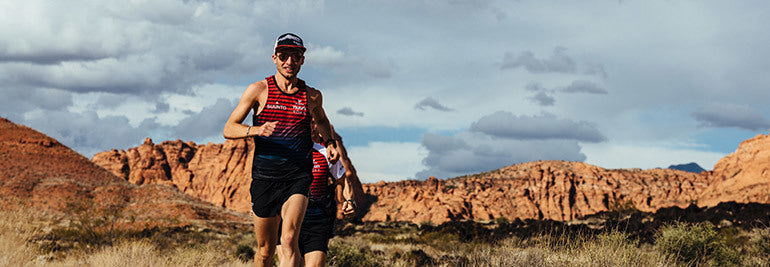
Training with TSS and hrTSS
One of the best ways runners and cyclists can constantly improve is by having a solid understanding of their training data. It’s trying to tell you something, but you can only understand if you speak its language.
Whether you are a triathlete, cyclist or a marathoner, TSS and hrTSS are two training languages well worth getting your head around. TSS is probably the most used training load algorithm amongst endurance athletes. It tells you how hard your training session was and the physical stress of your training over time. TSS is dependent on training with power, and ideal for cyclists, while hrTSS is an alternative for those training without power, and can be helpful for runners and other endurance athletes, such as cross-country skiers.
The partnership between Suunto and TrainingPeaks was formed to give you full command of your training data. You track your workouts with your Suunto watch and TrainingPeaks gives you in-depth analysis and planning tools to achieve your full potential. After each activity, you can analyze your heart rate, power, pace and other data to determine where you are at. (Read more about benefits you get with Suunto & TrainingPeaks.)
On Suunto 9 and Suunto 5 watches you are able to follow TSS and hrTSS in real-time. This lets you adjust the effort and duration of the exercise on the go, helping you reach your goal. TSS, hrTSS and other TrainingPeaks features can be accessed in the SuuntoPlus section of Suunto 9 and Suunto 5 watches.
You can have all the technology in the world, but to get the most of your training, your Suunto watch and TrainingPeaks, it’s worth the time getting a clear understanding of these two training metrics: TSS and hrTSS. So get yourself a coffee, sit back and read on.
Why bother with metric-based training?
The primary goal of a metrics-based approach to training is to understand what the body is undergoing from a physiological perspective, and how that ultimately influences training decisions. Understanding the stress that training puts on the body’s systems, and whether or not the desired response is being produced is integral to the modern training process. Understanding what both TSS and hrTSS are allows for a deeper discussion of the two and their merits.
What is TSS?
First things first, you need to understand TSS. Specially designed for cycling, the Training Stress Score metric tells you how much stress your body underwent on a ride. It’s a composite number that takes into account the duration and intensity of a workout to score the overall training load and physiological stress created by a training session.
By taking both intensity and duration into account, TSS allows for a better understanding of the “cost” of every individual effort and workout. TSS is calculated using the following formula:
TSS = (sec x NP x IF) / (FTP x 3600) x 100
Where “sec” is the duration of the workout in seconds, “NP” is Normalized Power, “IF” is Intensity Factor, “FTP” is Functional Threshold Power, and “3,600” is the number of seconds in an hour.
It’s worth defining and understanding this equation so you have an idea of why TSS is so accurate, and how the final score is derived. The components that comprise TSS are what make it so useful to athletes.
Normalized Power is calculated using an algorithm that is a little complex, but in a nutshell takes into account the variance between a steady workout and a fluctuating workout. It measures the true physiological demands of a training session. It considers both rapid changes in intensity, as well as critical responses in the body associated with those changes.
Unlike average power, Normalized Power is the power your body “thinks” it employed based on the variability of the workout. Intensity Factor (IF) is the ratio of Normalized Power to Functional Threshold Power (FTP). IF takes into account differences in fitness within or between individuals.
It’s a great way to track fitness over time for a given effort, for example the same ride with a lower IF indicates increased fitness. Using TSS provides a well-rounded look into both the physiological expenditure of an effort, as well as what that effort means for the fitness and progression of an athlete.
What is hrTSS?
More appropriate for those not training with power, the Heart Rate Training Stress Score (hrTSS) is based on time in heart rate training zones derived from an athlete’s lactate threshold heart rate. The calculation is made using an estimate of the amount of accumulated TSS in an hour given the level of exertion.
Suunto watches use intensity zones where HeartRate Zone 4 | Zone 5 limit equals the lactate threshold / an-aerobic threshold level. The hrTSS in Suunto watch uses this level to calculate the proper TSS value. You can find the heart rate zone setup on your watch settings: Training » Intensity zones.
It’s important to remember that Functional Threshold Power (FTP) is by definition 100 TSS per hour. This makes intense, or hypervariable efforts hard to account for given the limitations of the body’s cardiovascular system to respond rapidly enough to changes in intensity.
hrTSS is used as the default in TrainingPeaks when there is not enough data to calculate TSS, rTSS (Run Training Stress Score) or sTSS (Swim Training Stress Score). It can be accurate, depending on the effort, but doesn’t do as good of a job at incorporating intensity and duration into the equation.
Comparing the relative merits of TSS and hrTSS
If you’ve not yet taken the jump into training with power, there is some value in hrTSS. The best way to use hrTSS is with steady state efforts, such as long tempo and sub-threshold work.
These types of efforts suit the hrTSS formula because there are no abrupt changes in intensity. It’s easier to estimate hrTSS when the heart rate stays steady for longer periods of time. This metric begins to fall away when shorter and more intense efforts occur. The heart doesn’t respond rapidly enough to weight efforts above threshold.
This makes the “cost” of the workout seem much lower than it really is. While hrTSS may be recording a more moderate range, you’ll feel much more tired given that you’ve stressed systems in the body that hrTSS couldn’t pick up on.
TSS is the best way to ensure you have a good understanding of how taxing a particular effort or workout was. By incorporating Normalized Power into the equation, we get a much more accurate sense of the effort the body actually produced.
Picking up on these fluctuations in effort also allows for a much more accurate TSS reading. This not only is helpful in understanding a single workout, but influences core metrics such as Fitness, Form, Fatigue and ramp rate.
A more accurate Training Stress Score not only means you’ll have a better understanding of your workout, but you will likely also have a more productive approach to your planning, recovery, and execution.
The metrics that we have at our disposal help to inform our workouts, as well as help to execute them with a greater level of precision. Knowing how the metrics we rely on are calculated, and why it is we should trust one more than the other is important for any athlete.
TSS provides the most accurate picture of how both individual sessions and specific efforts impact the body. While hrTSS can help to quantify steady state efforts, it does not do a good job of highlighting the often stochastic nature of exercise. Using TSS will lead to more accurate planning and a better understanding of each workout.
READ MORE
View TSS and other power-based cycling metrics in real-time
3 TrainingPeaks training metrics to adjust your running on the go
Lead image: Kevin Scott Batchelor
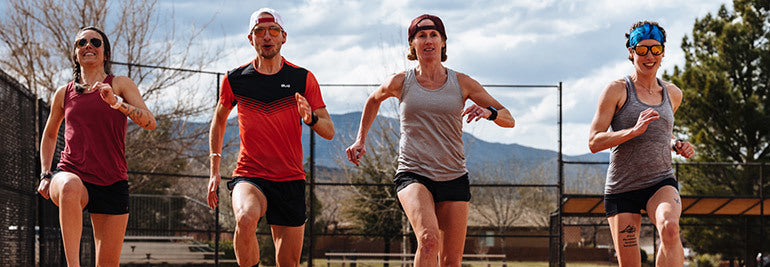
3 TrainingPeaks training metrics to adjust your running on the go
The definition of insanity, they say, is doing the same thing over and over again and expecting a different result. This holds true for our training. It’s easy to get stuck in a groove, running on autopilot, and wondering why we’re not getting the results we hoped for. But if you turn off autopilot and start paying attention to the details with a metric-based approach then you’ll see how to tweak things so your performance starts tracking upwards.
This is what the partnership between Suunto and TrainingPeaks is all about; to give you the tools and data to take command of your training. You track your workouts with your Suunto watch and TrainingPeaks gives you in-depth analysis and planning tools to achieve your full potential. After each activity, you can analyze your heart rate, power, pace and other data to determine where you are at. (Read more about the benefits you get with Suunto & TrainingPeaks.)
On Suunto 9 and Suunto 5 watches you are able to follow selected TrainingPeaks metrics in real-time. This lets you adjust the effort and duration of the exercise on the go, helping you reach your goal. hrTSS, rTSS, NGP and other TrainingPeaks metrics can be accessed in the SuuntoPlus section of Suunto 9 and Suunto 5 watches.
Two phases of metrics-based training
You can learn from metrics in two phases, in real-time with your Suunto 9 or Suunto 5 while you’re training, or post workout back at home by analyzing the results on TrainingPeaks. Both are valuable and both can help you to refine and improve your training.
Running Training Stress Score (rTSS)
The most useful tools to quantify how hard you’re training are those metrics that account for both the volume and the intensity of your running. TSS in cycling uses power as the criterion measure of intensity, and this overcomes many of the limitations associated with the use of heart rate when quantifying intensity. Since running speed is a function of power, and for most runners, speed or pace is the measure of greatest interest, we can use the same principles applied in the TSS system to quantify training stress in running. In particular, the elements of the normalized graded pace (NGP; see below), relative to the functional threshold pace in conjunction with the duration of the workout we can determine an appropriate rTSS score for each workout.
The stressfulness of any given pace is determined in relation to your current functional threshold pace (that is, the fastest running pace you could sustain for one hour). The calculation makes adjustments for hills (for example, a hilly 40-minute run at a steady pace of 8:00/mile would generate a higher TSS than a flat version of the same run) and even for the fact that running at any given pace becomes more physiologically stressful the longer that pace is sustained. This can give us an apples to apples comparison for training stress incurred by a track workout versus a long steady run versus a fartlek run, or any other workout. It provides the framework by which we can see the big picture, or the forest despite the trees.
Learn more about Running Training Stress Score (rTSS) at TariningPeaks.com
Normalized Graded Pace (NGP)
Normalized Graded Pace (NGP) is the adjusted pace reported from a global positioning system (GPS), or other speed/distance device, that reflects the changes in grade and intensity that contribute to the physiological cost of running on varied terrain. We can derive NGP from flatland running, such as on a running track, but NGP really shines when applied to pace data obtained on undulating or even hilly terrain.
Some readers, who come from cycling backgrounds and have used power meters, may recognize the similarity in name of NGP with Normalized Power (NP) from cycling. The inspiration for NGP came from the work of Andrew Coggan, Ph.D. and his development of NP. For coaches and/or athletes who participate in multi-sports, and have used NP and Training Stress Scores (TSS) for cycling, there has been a great desire to extend the principles and utility of the NP/TSS system to other disciplines. The obvious first extension that comes to mind is running. The recent availability of downloadable GPS recording devices makes the adaptation of the NP/TSS system to running an attractive proposition. An in depth discussion of the concepts of NP and TSS can be found here.
The long and the short of it, however, is power is the cycling analog of pace in running. In fact, if we plotted power vs. pace at a constant speed, for a given runner, there would be a very close relationship; they change proportionally. So, if you are a runner, and you track training based on pace, you are indirectly tracking power. So, the underlying principles of NP in cycling hold for what can be termed Normalized Graded Pace (NGP) in running.
Learn more about Normalized Graded Pace (NGP) at TrainingPeaks.com
Intensity Factor® (IF®)
Intensity Factor gives you relative intensity in running by comparing Normalized Graded Pace to an-aerobic threshold pace. Therefore Intensity Factor is a valid and convenient way of compare the relative intensity of a training session or race either within or between runs, taking into account changes or differences in threshold pace.
In Suunto watches we use the threshold as limit between Zone 4 and Zone 5. This means that the effort you have been running is a share from an-aerobic threshold level. Intensity factor gives you a simple info on how hard you are working out. Suunto watches use a intensity zones where Pace Zone 4 | Zone 5 limit equals the lactate threshold / an-aerobic threshold level. The rTSS in Suunto watch uses this level to calculate the proper rTSS value. You can find the pace zone setup on your watch settings: Training » Intensity zones » Advanced zones.
The Intensity Factor for recovery workouts should be under 0.75, for endurance runs 0.75-0.85, for tempo workouts 0.85-0.95 and for an-aerobic threshold intervals 0.95-1.05.
Learn more about Intensity Factor at TrainingPeaks.com
READ MORE
View TSS and other power-based cycling metrics in real-time
Training with TSS and hrTSS
Lead image: Kevin Scott Batchelor














































































